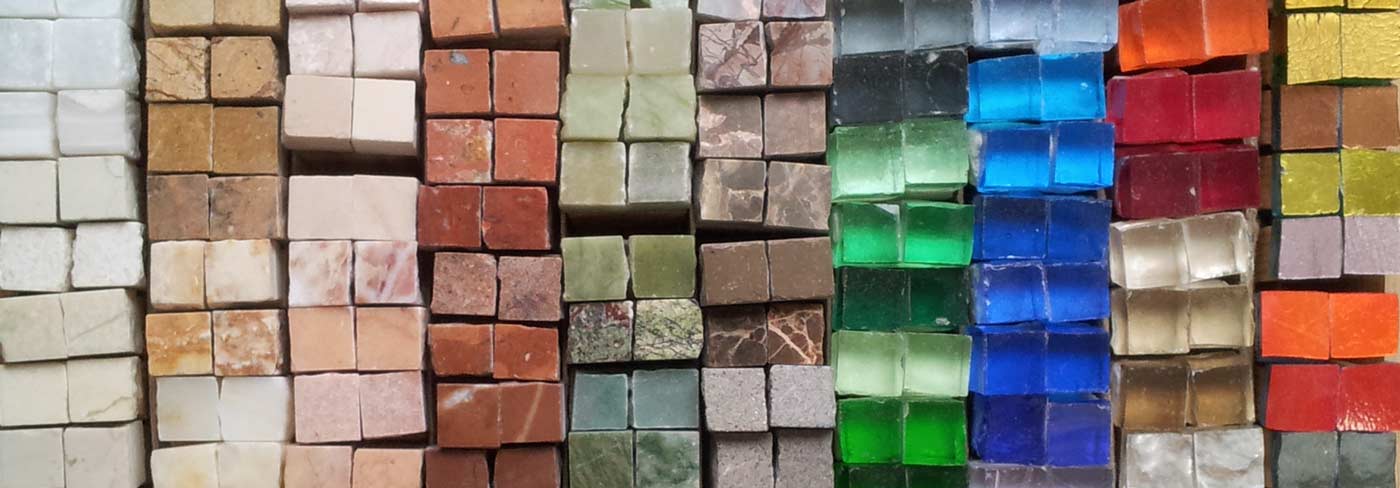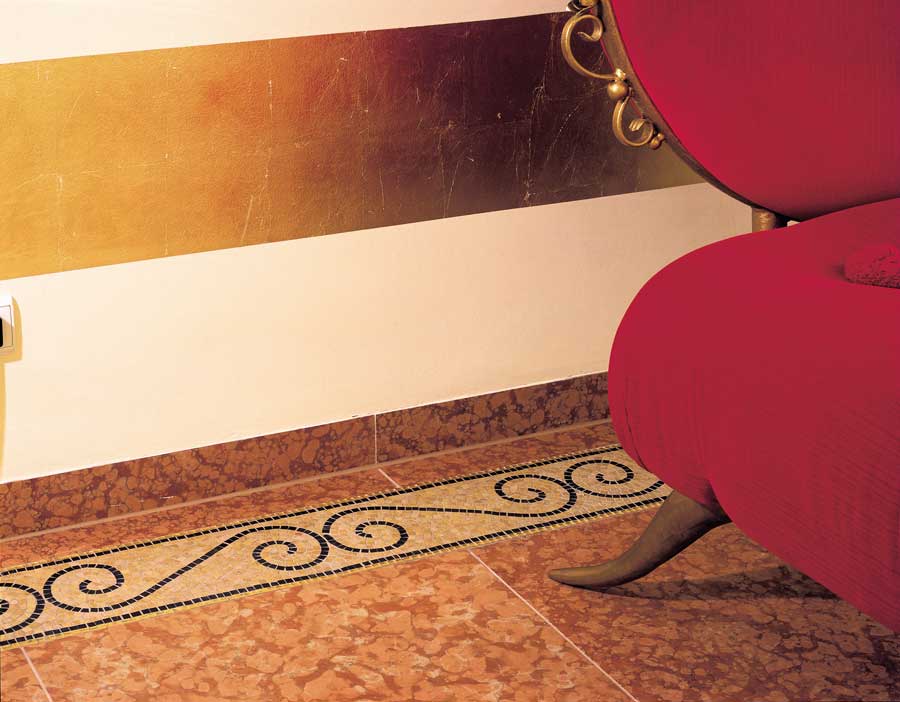Fornasari mosaici works with the classic materials of the mosaic tradition, such as enamels, golds and natural stones.
The vitreous enamels for mosaics are opaque glass, they are produced in infinite shades of color, pressed into plates, generally round, to be then subsequently cut with a glass cutter and hammer to generate the required shape. Products already in Roman times, generally used as a wall covering, they are particularly suitable for outdoor use. There are also in transparent version, but the chromatic range is decidedly more limited.
Golds are the finest materials and consequently the most expensive. They are obtained from the fusion of two layers of glass between which the gold leaf is set. They exist in dozens of shades and based on the support glass you can have both those with a smooth surface and those with a wavy surface.
Finally, natural stones, generally used as a floor covering, are limestone rocks of sedimentary or metamorphic origin. The cube format, a classic of the mosaic tradition, originates from the cutting of marble tiles to obtain rods, which are then cut by hand on the other sides to obtain irregular cubes.

